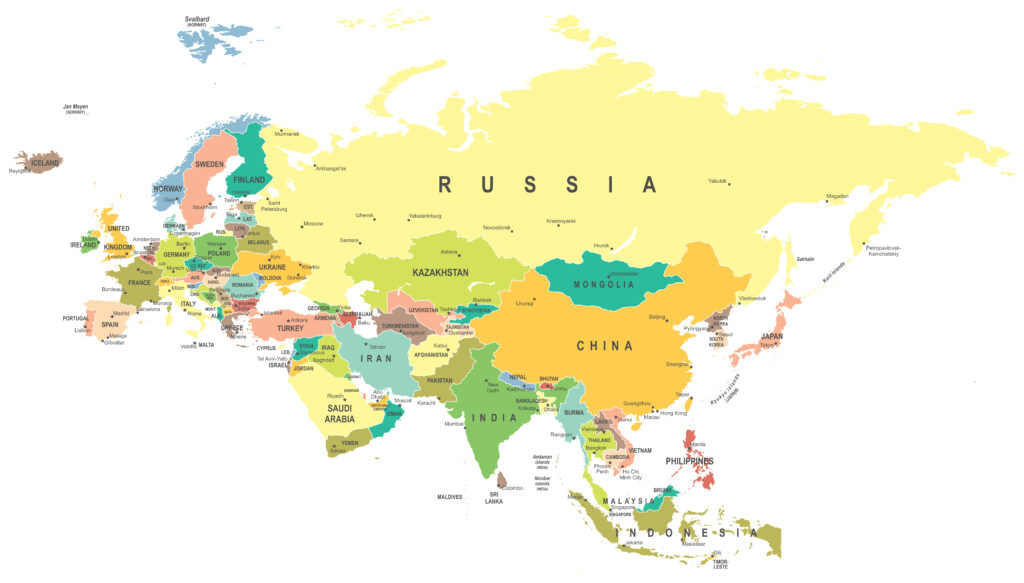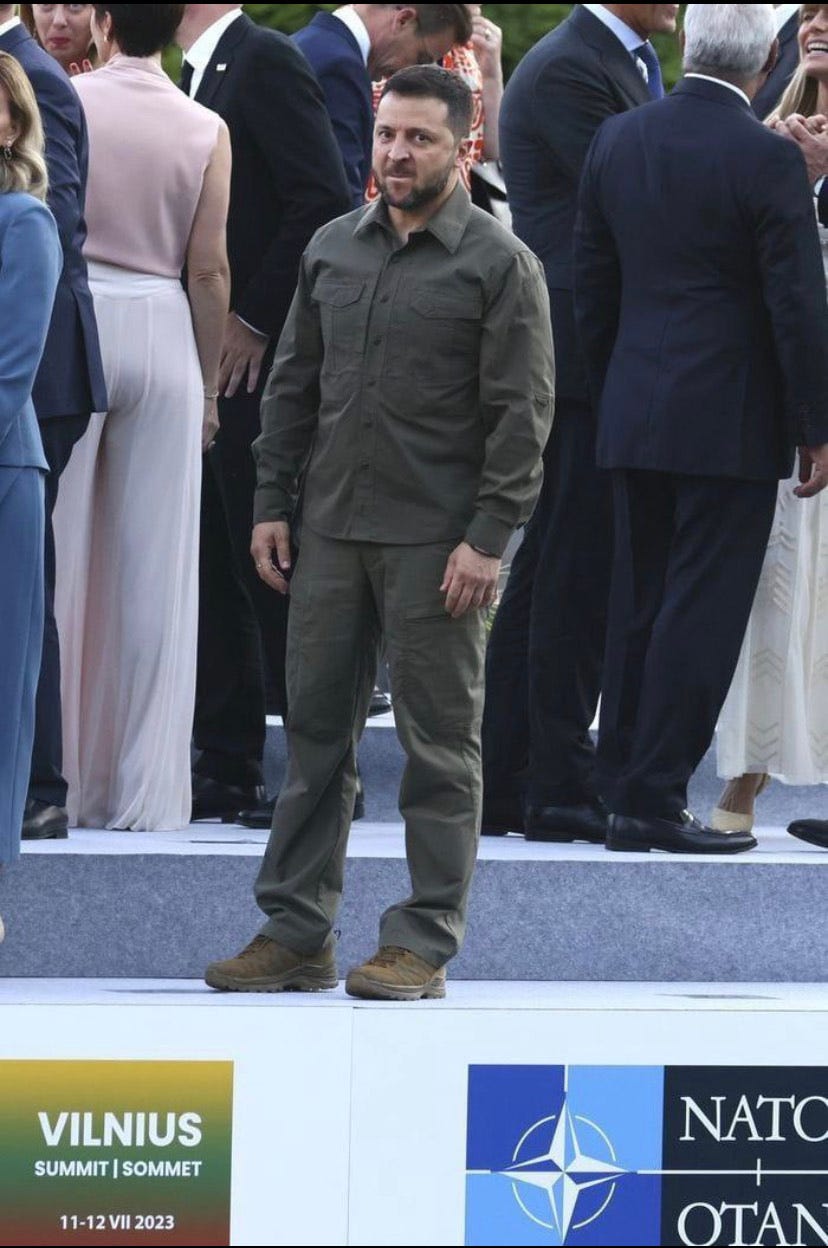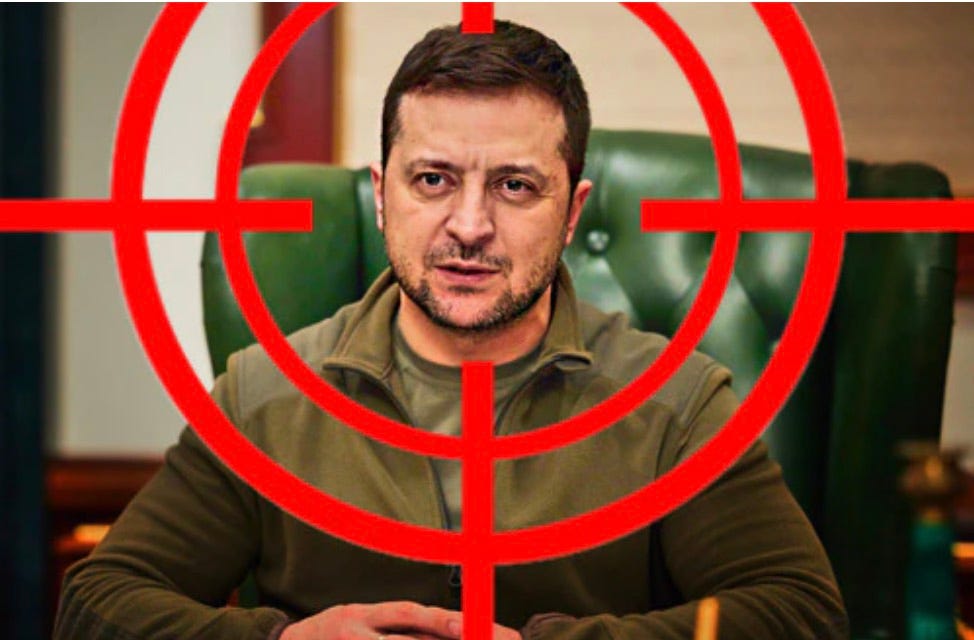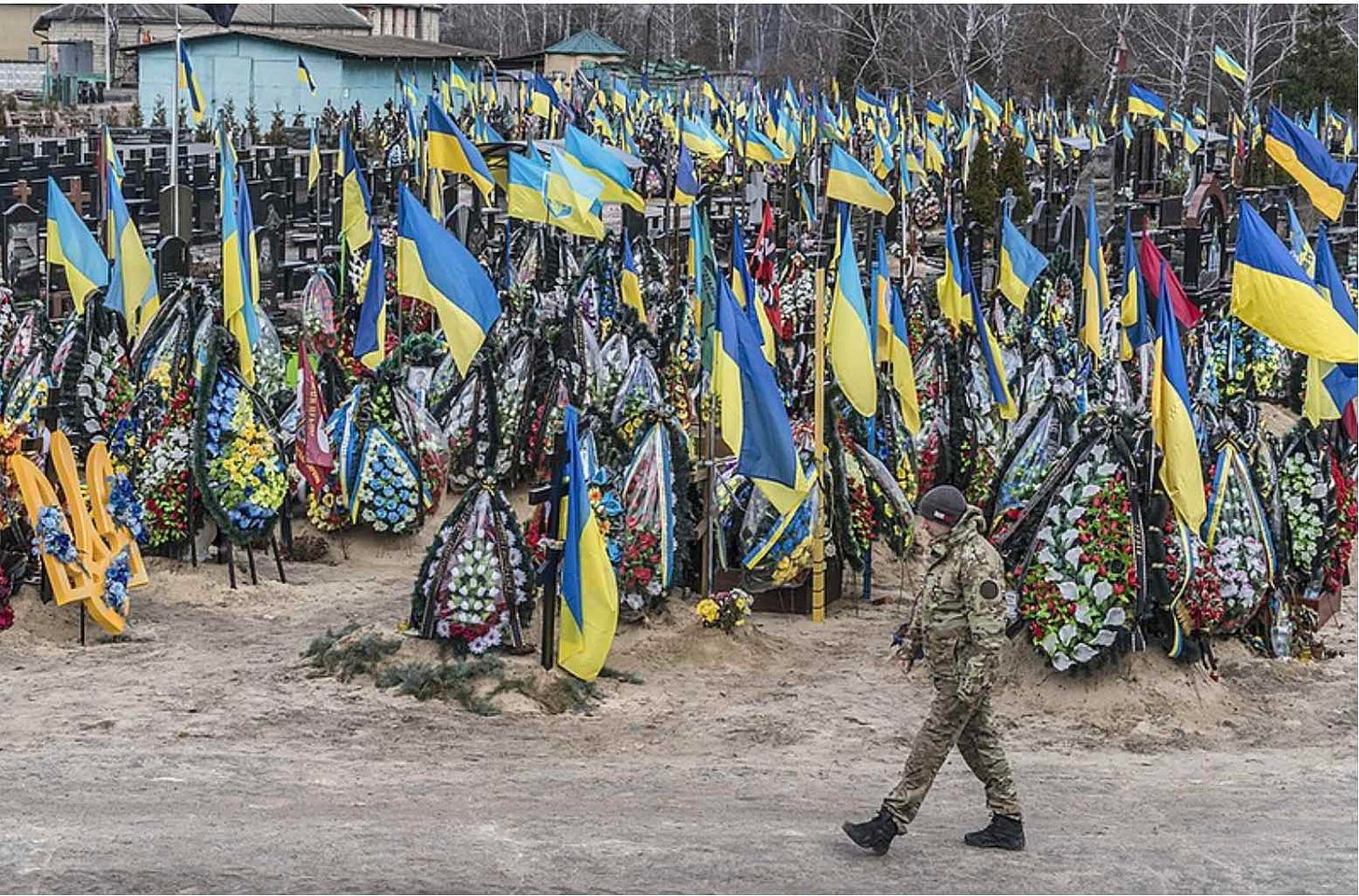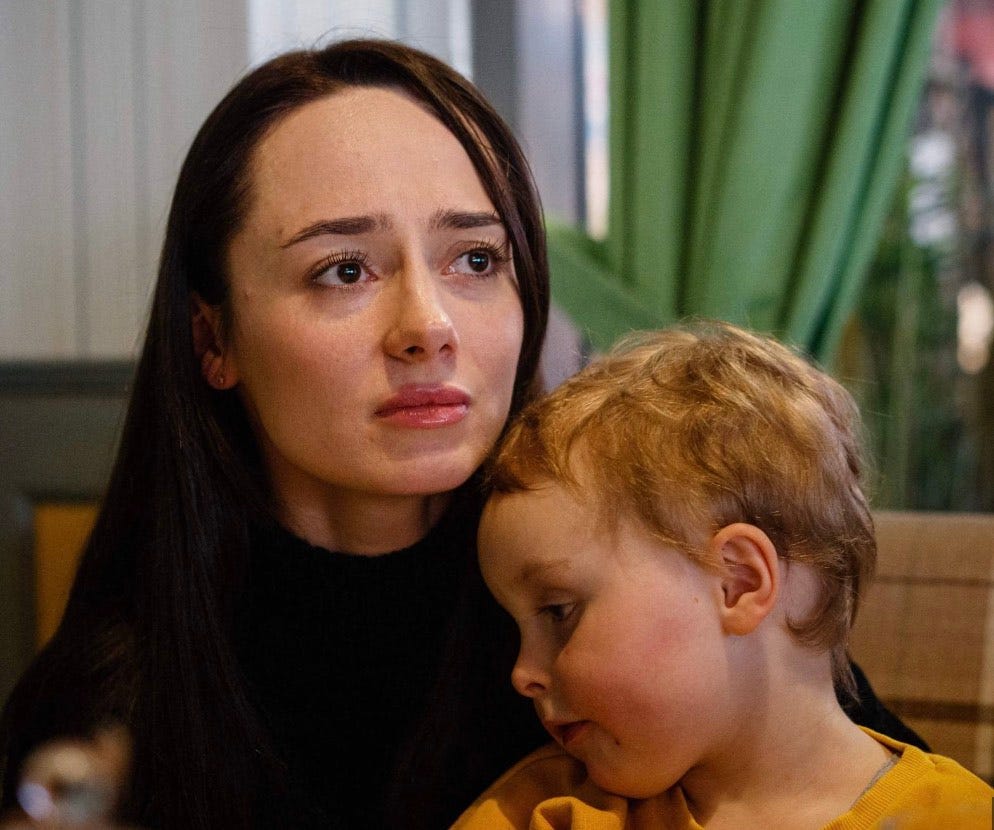
In Reality It Resulted Largely from Kyiv’s Destruction of Eastern Ukraine’s Economy Under Neo-Liberal Economic Policies Pushed by Washington Since the 1990s
By Ambrose Sylvan, Covert Action Magazine, 7/13/23
Ambrose is an independent researcher and former social worker from Toronto, Ontario.
The war in Ukraine is commonly seen through one of two lenses. The vision presented by Western, NATO-aligned powers is one of an astro-turfed Donbas separatism created by Moscow to justify the division of Ukraine.
The view of NATO’s critics is that the Donbas republics rebelled against the Euromaidan revolution and the country’s nationalistic, Euro-centric tilt. The reality is that this conflict started much earlier and was merely frozen until the overthrow of the Ukrainian government in 2013.
Political Economy of the Donbas
Global Security outlines the economic situation in Donbas at the time of the dissolution of the USSR.
The Donetsk basin had been settled by Russian and Bessarabian people in the 18th century, after the steppes of Ukraine and the coasts of the Black and Azov Seas were added to the Russian Empire.
Donbas held enormous reserves of coal, which were vital to the industrialization of the Empire and, later, the Soviet Union. During Soviet times Donbas became the industrial center of the Ukrainian Soviet Socialist Republic, with major iron mines in Krivoy Rog, the massive “Azovstal” steelworks, and the manufacture of machine parts for the defense and space industries.
Coal miners were able to exert political power throughout the industrial age by staging widespread strikes. Major strikes in August and September 1962 were held in Donbas and neighboring regions, resulting in promises of extra pay and threats of military force from the authorities.
Another wave of Donbas strikes in 1989 received concessions from the central government and the strike committees were effectively left in control of mining towns instead of the Communist Party.
The tension between the central government and the Donbas miners was fueled by the increasing difficulty (and cost) of pulling coal from Donbas mines. Other coal-mining regions of the USSR were less costly but the social unrest in Donbas was placated with increasing state subsidies.
Ukrainian independence ended the Donbas struggle against Moscow but created intractable economic problems. The extensive subsidies for Donbas mines were shifted to the less wealthy government in Kyiv, the economic integration of the Soviet Union’s republics was disrupted, and the shift to a market economy was disastrous.
After the break-up of the Union, the political leaders of the Donbas miners would become known as “red directors,” socialists who put the interconnected economic needs of the Donbas and surrounding regions at the heart of their demands to Kyiv.
One of the earliest separatist organizations in Ukraine was the International Movement of Donbas. The Ukrainian news site DEPO, citing Novosti Donbas, describes the origin of the Intermovement as a project of academics at Donetsk University. The group was created as the “International Front for Donbas” at a meeting held on August 31, 1989.
The “Interfront” was clearly inspired by the Intermovement of Estonia, which had formed the year before to defend communism and the Union state from Estonian separatists. In the summer of 1990 two of the leading figures of the Interfront, the brothers Dmitry and Vladimir Kornilov, traveled to the Baltics and western Ukraine. On this trip they studied the Intermovement of Estonia and its parallel organizations in Lithuania and Latvia, as well as the anti-Soviet People’s Movement of Ukraine (“Rukh”) based in Lviv.
The founding conference of the Intermovement of Donbas was held on November 18, 1990, and the Kornilov brothers were among those elected to its central council. The Intermovement unsuccessfully promoted the New Union Treaty and gained little popular support. Their most enduring success debuted at a rally on October 18, 1991, not long before the referendum on Ukraine’s declaration of independence: a red, blue, and black tricolor flag that would eventually become the flag of the Donetsk People’s Republic.
Again citing Novosti Donbas, DEPO reports that former KGB General Oleg Kalugin had accused all of the Intermovements of being created by the KGB. According to Kalugin the Intermovements were meant to undermine nationalist separatism in the republics of the Soviet Union.
One might question whether or not Kalugin is the most reliable source on this subject. He had been demoted for criticizing KGB chief Yuri Andropov during Andropov’s anti-corruption campaign, and also allegedly protected CIA spies in the USSR.
Kalugin was elected to the Congress of People’s Deputies on the Democratic Platform of the CPSU in 1990 and supported the anti-communist reformer Boris Yeltsin. After securing the break-up of the KGB, Kalugin moved to the United States in 1995. From the 1980s onward Kalugin had been an opponent of the socialist system and a supporter of those who would destroy it.
Whatever the truth is behind Kalugin’s statements, it is evident that an enthusiastic clique of academics, even with KGB backing, could not create a separatist movement out of thin air. The proof is in the results of the December 1, 1991, referendum, in which 92% of voters said “YES” to the Declaration of Independence from the USSR.
The Intermovement for Donbas failed to raise support for a renewed USSR, but the separatist movement would grow larger and stronger with every crisis that shook independent Ukraine.
The Shock Year
The act of independence immediately triggered a years-long economic crisis which was the driving force behind Ukraine’s growing separatist and anti-government movements.
The March 1990 elections to the Congress of People’s Deputies and Supreme Soviet of Ukraine had been the first to allow non-communist candidates to participate. Liberals, nationalists, and other anti-communist groups like Rukh entered the legislature. During the reaction to the August Coup in 1991 the Communist Party of Ukraine was banned and the nationalist groups remained as the most organized factions in the legislature.
As Ukrainian news site STRANA opined in its retrospective on 30 years of independence:
“The nerve of 1992 is the first attempt by the country’s leadership to deviate from the framework set by 1991. When Ukraine arose as a result of a compromise between very different groups (including representatives of the party apparatus, directors of enterprises), most of [them], as well as the population as a whole (which was shown by voting for Kravchuk, and not for Chornovil [leader of Rukh]), were not nationalistic and did not want to completely break with Russia.”
The newly independent government rapidly implemented policies which served nationalist and anti-communist ideologies irrespective of the material impact they had on the people of Ukraine. Per STRANA, “the nationalist tilt and the growing tension in relations with Russia became a serious factor in internal destabilization.”
The year 1992 was immediately characterized by economic “shock therapy.” On January 2, 1992, all price controls were released and the market was allowed to dictate prices on all consumer goods. The stated goal of this policy was to find balance between the shortage of goods and the large amount of money that the public held with nothing to buy. The “solution” to the “problem” of the public having too much money was predictable: The shelves were full of goods once more but prices increased by 2100% by the end of the year.
Inflation was accelerated by the spike in oil and gas prices as Ukraine lost the preferential rates it had enjoyed in the Soviet Union. Despite warnings from Moscow and the National Bank of Ukraine that the country would have to pay world prices if it exited the “Ruble Zone,” the government decided to drop the ruble as Ukraine’s currency by year-end.
New national borders interrupted the industrial sector, costs soared, demand fell (especially in state-driven industries like defense and science), and production crashed. For the first time in living memory, Ukrainians experienced the terrors of unemployment, price gouging, and starvation in a time of plenty.
In a Year, We All Became Impoverished Millionaires
The monetary crisis was an indirect result of the USSR’s final Five-Year Plan, developed under the principle of “acceleration.” Starting in 1990 the Union Republics were forced to issue “Consumer Cards” alongside wages to help ration basic goods like bread and sugar.
The cards were perforated sheets of tear-off tokens that were printed in color and valid only if stamped by the employer or issuing agency. These were commonly referred to as “coupons” in Ukraine (as in English this comes from the French word couper, “to cut”). The main obstacle to counterfeiting was the limited availability of color photocopiers, which became increasingly accessible after the borders were opened to Western trade.
From-UA tells us the origin of the “coupon-karbovanets,” Ukraine’s first national currency. Independent Ukraine still used the ruble as its official currency in 1992, but rubles were printed by Goznak in Moscow. Unable to print more rubles to accommodate soaring prices and (slightly) increased wages, the Kyiv government had to issue its own currency which was of much lower quality and was much easier to counterfeit than the ruble.
Introduced January 10, 1992, the karbovanets was printed on simple paper with few protections. It was meant to supplement the ruble and replace coupons, not to act as a primary currency. The ease of counterfeiting was made worse by the ease of modification: A one karbovanets note was the same color as a 100 karbovantsiv note. The kupon-karbovanets (notes were marked “купон,” literally “coupon”) became the most counterfeited currency in the world and inflation accelerated further. By the end of 1992 the karbovanets was so worthless that it was no longer profitable to counterfeit.
Counterfeiters and “shuttle traders” who exploited shortages of money and goods made enormous illicit profits. Criminal enterprises flourished and became increasingly appealing to an impoverished public and dissolute youth, such as the “Runners.” These were gangs of ultraviolent teenagers who terrorized the streets of southern cities, using grenades and handmade pistols in their feuds.
Ukraine dropped the ruble on November 12, 1992, and had no stable legal currency to use at markets. Wages were worthless and some workers were paid directly in consumer goods like soap instead of money. The economic problems of the working masses had become many times worse than they had been at the end of the Soviet era.
Demands of Donbas
Naturally there were outbursts of popular rage against the government as people lost their livelihoods. Ph.D. student Vadim Borisov was with the miners in Donetsk when the 1993 general strike began.
Borisov describes the inciting incident at Zasyadko coal mine on June 7:
The spark that ignited the flame was the increase in prices, carried out in the Donetsk region without advance warning on June 7. Half-smoked sausage, the daily food of miners, almost quadrupled in price overnight to 20,000 rubles (£4), compared to an average miner’s monthly salary of 120,000.
Many miners found out about the price increase when their wives returned in the morning from the shops, where they were going to buy food for their men on the “brake” …
The last straw was the director’s innocent attempt to justify the state’s price policy—here the workers immediately agreed with the words of one of their comrades: ‘Work yourself!’”
As the workers marched to the Kirov District Council, a local journalist informed the City Strike Committee of the spontaneous action. The Strike Committee in turn contacted all of the mines in the region and work stopped in mines and other industries across Donetsk, Luhansk and Dnipropetrovsk.
A government commission headed by the Finance Minister (who had authored the disastrous economic reforms) arrived in Donetsk on June 8. The striking miners made their demands clear: a no-confidence referendum on the President and parliament, and stronger regional self-government for Donbas. On June 18 the government agreed to schedule the referendum for September and to double miners’ wages. However this wage increase did little in the face of hyperinflation and the referendum was eventually canceled in favor of early elections.
Regional autonomy had already been a project of the Donetsk Regional Council before the 1993 general strike. Chairman Vadim Chuprun, elected November 12, 1992, had been carefully negotiating agreements with the president regarding Donetsk Oblast’s right to determine some of its own economic policies. In a February 1993 interview with Dmitry Kornilov’s newspaper, Chuprun explicitly proposed the federalization of Ukraine. Then on June 8, when the miners demanded autonomy and a confidence vote, Chuprun called a meeting of the Donetsk Council to demand broad autonomy for Donetsk, Luhansk, Dnipropetrovsk and Zaporizhzhia.
Even after the general strike had ended, President Kravchuk acceded to some of these demands and, on November 26, 1993, his Decree no. 560/93 gave those four regions control over 400 state-owned enterprises. When the parliament blocked this decree and only 200 enterprises passed to regional control the Donetsk Council responded by refusing to remit taxes to Kyiv, keeping the money to fund their own budget.
The federalist movement reached its maturity the next year. A “consultative poll” was held in Donetsk and Luhansk oblasts on the same day as the early elections, March 27, 1994. The central government refused to acknowledge it as a legally binding referendum, but the poll results showed that Donbas had a popular mandate to establish an autonomous government.
The poll had four questions: whether the constitution of Ukraine should change from a unitary state to a federal state; whether the Russian language should be constitutionally equal to the Ukrainian language; whether Russian should be an equal language of government and education in Donbas; and whether Ukraine should be a full participant in the post-Soviet Commonwealth of Independent States.
An overwhelming majority of voters said “YES” to all four questions: The federal system received 84% of all valid ballots in Donetsk, and the other three questions received more than 90% of all valid ballots in both regions.
Writing from Donetsk during the 1993 strike, Borisov noted that the national news media were hostile toward the Donbas movements. Though this strike was the largest in Ukrainian history, it received much less coverage than those during the Soviet era, directed against the Communist Party. The advocates of autonomy and federalism were portrayed as separatists or even as Russian nationalists. Were these movements really motivated by nationalist ideology?
Deindustrialization
Tensions between the Donbas miners and the Ukrainian government continued to intensify over economic and political issues, and major labor actions continued through the decade.
In 1995 Kyiv cut coal subsidies to reduce budget deficits and inflation, resulting in “mounting financial losses and payment arrears across all sectors of the economy.” That November the coal miners went on strike for two days to demand $112 million worth of unpaid wages in addition to their unpaid disability benefits, increased pensions, and worker control of coal policy. On November 15th the government agreed to pay a quarter of back wages immediately and to gradually release the remaining arrears.
The government did not follow through and strike action resumed on February 2, 1996, coordinated across Russia and Ukraine from Siberia to Donbas. As many as one million miners and allied workers went on strike in Ukraine. This time they demanded more than $560 million in unpaid wages. The strikes resumed in July when miners blocked roads and railways and picketed local administration buildings, bringing economic activity to a halt.[1]
The government was finally compelled to agree to a full repayment of wages but its restructuring of the coal industry accelerated. Mines were divided into categories based on profitability and work was halted at the least profitable sites. Subsidies were distributed unevenly and wages continued to go unpaid, provoking chronic labor actions and rivalries between mines and between unions.
Wage arrears reached $1 billion (or $3 billion by some estimates) by May 4, 1998, but only one of two major mining unions organized a strike, at only 45 of Ukraine’s more than 200 mines. The next week 1,000 miners marched to Kyiv on bleeding feet, unable to pay for buses after 15 months without pay. Some 20,000 desperate miners were on strike for months, many occupying a tent city in front of the Luhansk government building. It was there, on December 14th, that miner Oleksandr Mykhalevych burned himself alive. He left a note explaining his action:
“I’m tired of being scorned by mine directors and the regional administration. My [self-immolation] is hardly a way out, but it might help resolve the matter more quickly.”
Oligarch Rinat Akhmetov amassed his fortune in the 1990s by privatizing mines and steel mills, including Azovstal. Today he is the wealthiest man in Ukraine, #466 on the Forbes 500. [Source: kyivpost.com]
This time the government would not relent. Permanent mine closures began in June and the government secured loans from the International Monetary Fund by promising coal sector restructuring. The August 1998 Memorandum of Economic Policies guaranteed that no government subsidies would support production of coal, that no new mines would be opened, and that all mining subsidies would be used for “restructuring” (privatizing) the industry and permanently closing another 20 mines every year.
The central government’s economic warfare against the Donbas has continued unabated for decades. By the time of the Euromaidan and the rebellions in Donbas, Ukraine had only 150 mines remaining in operation, compared to 275 in 1998.
The mining workforce had shrunk from 1.2 million in 1996 to 500,000 in 2014 and miners were still owed an average of two to three months of back pay. The prospects for miners under the post-Maidan government were bleak: Only a month into his term Prime Minister Arseniy Yatsenyuk—a U.S. favorite—had sought a massive IMF restructuring loan worth up to $14 billion (almost 10% of Ukraine’s GDP). Yatsenyuk said that his policies would stabilize the economy but would increase gas prices by 50%, personal income taxes by 47-66%, and inflation by 1,000%.
Pushed to the Edge
Kyiv’s systematic destruction of the Donbas economy is a much greater driver of separatism than any Russophile nationalism. Sociological surveys conducted in early 2014 show us the most important issues to eastern Ukrainians on the verge of civil war.
Eight southern and eastern oblasts were surveyed by the Kyiv International Institute of Sociology (KIIS) in April 2014. KIIS found that, overall, 69.7% opposed annexing their region to Russia. In Donetsk this fell to 52.1% opposed, with 27.5% in favor. In Luhansk 51.9% opposed annexation while 30.3% supported it.
A Gallup poll conducted for the International Republican Institute in March 2014 had similar findings: 74% of easterners (Donetsk, Luhansk, Dnipropetrovsk, Kharkiv) did not feel that Russians were under threat because of their language, and 61% did not support Russian military intervention to protect Russo-Ukrainians. Even among ethnic Russians there was no clear preference for intervention, with responses split between 43% in support and 43% opposed.
Both surveys found stronger opinions about international economic relations than about ethnic politics. According to KIIS only 24.7% of respondents would choose Ukraine’s entry to the European Union over the Eurasian Customs Union; 46.8% preferred to join the ECU, rising to 64.3% in Luhansk and 72.5% in Donetsk. In Gallup’s poll the national average showed 52% in favor of the EU and 27% for the ECU. These proportions were inverted in the East, where only 20% supported EU membership and 59% favored the ECU.
KIIS additionally asked about the state structure of Ukraine. Only 10.6% in Donetsk and 12.4% in Luhansk indicated that they would keep the unitary state with its weak oblasts; 41.1% in Donetsk and 34.2% in Luhansk wanted power to be decentralized with oblasts given greater authority; and 38.4% in Donetsk and 41.9% in Luhansk endorsed a federal system with each region having its own state and the national government becoming a federation of these states. There were clear majorities in Donetsk and Luhansk (79.5% and 76.1%) that desired autonomous local governments.
Another survey was carried out by the Donetsk Institute for Social Research and Political Analysis in April 2014. It found that 31% of respondents in Donetsk favored a decentralized government with strong oblasts, 16% supported federalism, 27% supported Russian annexation, and 5% supported Donetsk independence. In total, 79% of respondents wanted Kyiv to have less power and 48% wanted Donetsk to have its own state formation, whether independent or federated with Ukraine or Russia.
On the eve of the separatist rebellion there was a clear preference among Donbas residents of all nationalities to have their own state and to join the Eurasian Customs Union. These were the political-economic concerns which the separatist republics could address in order to win popular support.
Breakaway
The infamous Donbas independence referendums were held just a few weeks after these surveys had been published. Despite accusations of endemic fraud and fabricated results the outcome was not far from what had been described by scientific opinion polls. The ballots asked not for independence but whether the republics should have “self-rule,” which the Donetsk electoral commissioner said could include autonomous or federal status within Ukraine.
When we consider the souring of public opinion on Kyiv’s “Anti-Terrorist Operation” and its civilian casualties, it is not hard to imagine how the 79% that polled in favor of more self-governance could have become 89% voting in favor of Donetsk self-rule.
Actions speak louder than words, and the people of Donbas did more than vote and answer surveys. KIIS found that the People’s Militias had little support in April 2014: In Donetsk they had 18.1% in favor and 72% opposed, and in Luhansk they had 24.4% in favor and 58.3% opposed. The separatists did not endear themselves to the hundreds of thousands of Donbas miners. They blocked mine exits, stole vehicles and explosives, kidnapped managers and union leaders, and tried to gang-press workers.
Nevertheless, analysis by Foreign Affairs found that “the size of the local mining labor force remains the strongest predictor of rebel activity.” They may not have been nationalists, but the people of Donbas were joining the revolt against Kyiv.
Surveys taken after the Minsk Protocol showed the solidification of Donbas separatism. In a 2016 survey by the Humboldt University of Berlin, 55.6% of DNR respondents wanted to remain within Ukraine while support for Russian annexation had grown to 44.4%. Another 2016 study, commissioned by Ukraine’s Ministry of Information Policy, showed 31% supporting autonomy within Ukraine and 47% supporting DNR independence; only 6% wanted Ukraine to regain the territory by force.
By 2020 the Donetsk Institute’s follow-up survey had found that 45-50% of respondents favored annexation and only 20-25% supported a return to Ukraine; the remaining 25-30% answered that they wanted any resolution that would end the war.
At the start of the 1990s Ukrainians were united in seeking independence from the USSR. It was the years of struggle and starvation which followed, aggravated by nationalist politicians and anti-Russian policies, that alienated the people of the Donbas. In large and heterogeneous countries like Ukraine, contradictions naturally arise between the interests of the people. Federalism has been proven to mitigate these contradictions in countries such as the United States and Canada, yet it was denounced at every turn by Kyiv.
Shut out of power, the Donbas was subjected to decades of ruthless economic policies which suited northern and western Ukraine’s desires to join the European Union. When President Viktor Yanukovych refused to sign the EU Association Agreement, acting in the interests of the south and east, he was ousted by the Euromaidan protests and riots in the capital. The government which replaced Yanukovych’s Party of Regions immediately signed the agreement, took on colossal debts, and adopted catastrophic austerity measures.
This is how Russian separatists, far-right extremists, and paramilitary bandits were able to find support. Their militant actions burst the tension and made secession a real possibility for the first time. Now a decade of war and blockades has deepened the fissure between Donbas and Ukraine and, with the accession of Donetsk and Luhansk to the Russian Federation, this division may become permanent.
